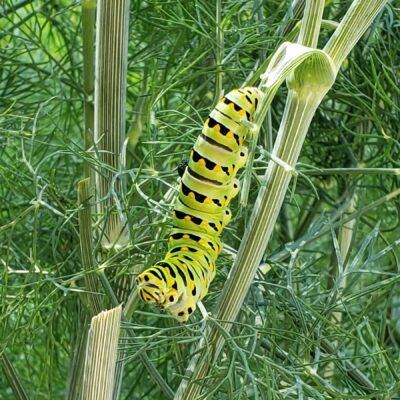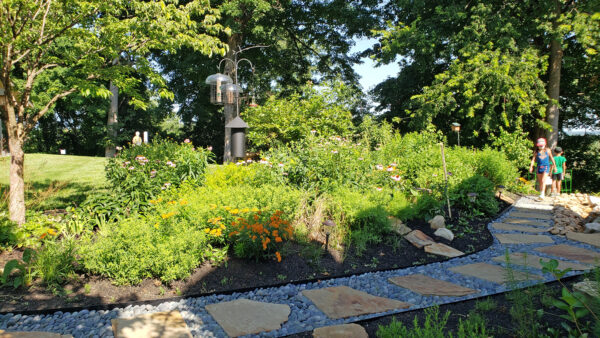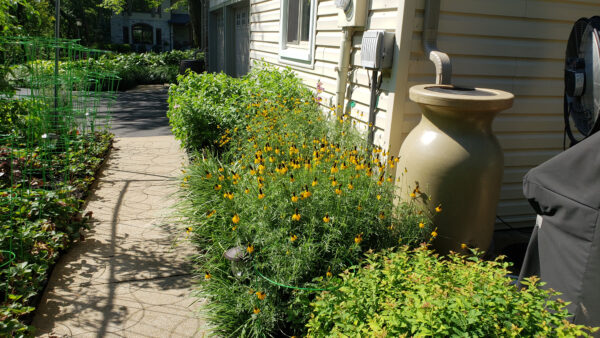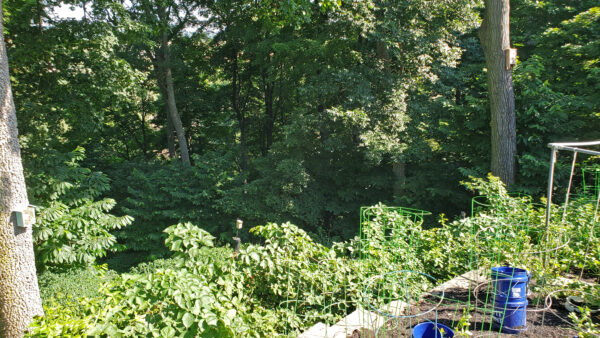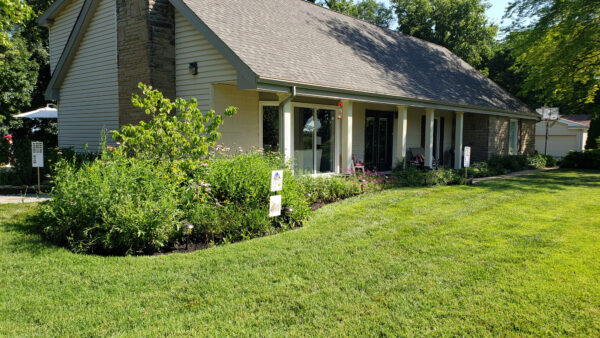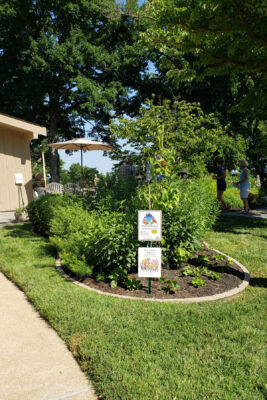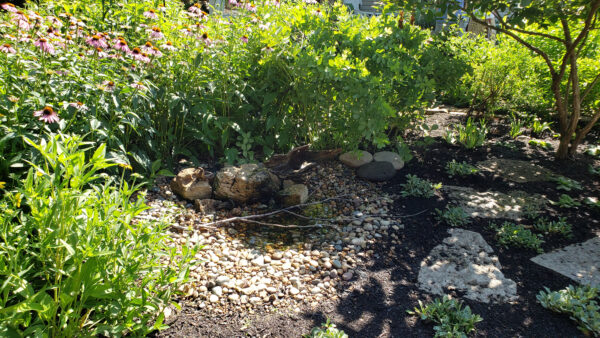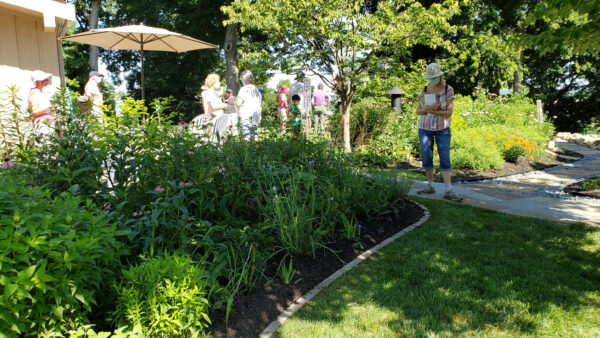Wild Ones Gatherings July 2020
Homes of Fran & Jim Fulton and Kathie & Dale Dietz
Wednesday, July 8th and Saturday, July 11th
92 attendees across the 2 dates
Our July Gatherings were held, for members only with social distancing and masks, at the homes of Fran & Jim Fulton and Kathie & Dale Dietz. Instead of our usual group discussions and information sharing at the beginning and end, we distributed the following ahead of time, written by Fran Fulton, so that those attending would still get to know the landscape. Click here for the plant list
_____________________________________________________________
Fran and Jim Fulton’s Yard History
By Fran Fulton
Our adventure in native plant gardening began in the summer of 2017 after I sat next to Dawn Weber at a butterfly group potluck spring gathering and learned about the Audubon Bring Conservation Home site visits. Mitch Leachman toured our property as well as our daughter’s next door, and thereafter we spent a summer tearing out non-natives and adding a majority of Mitch’s suggested plants.
At that time, we had already lived here for 45 years, tending the gardens of the original owners (1961-1972), both of whom were passionate gardeners. Our principal interest is nature and wildlife, especially birds, not gardening, but we loved the view of the farmland below and the Missouri River in the distance. We were a bit naive as to what taking care of an acre property would involve. There were lots of the usual non-native foundation plantings, a bed of English Ivy framing the original sidewalk, paper birch, honey locust, white and red pine, blue and green spruce, rhododendron, azalea, lots of bulbs and numerous other long-gone plants. With retirement we realized that we needed to start reducing the amount of work required, so some gardens were removed, the front entry area was redone and more hardscaping was added. We did add two Red Oak trees.
A special mention is needed for the steep ridge behind our house. Although most neighbors left the ridge in a natural state, the prior owners cleared out enough to allow them to establish a formal space with three tiers supported by large creosote-coated railroad ties. The top tier was English Ivy, the second was ivy and pachysandra, and below was a mix of forsythia, day lilies and ivy, all kinds of bulbs and many tall weeds with varying styles of stickers.
Our first solution to all the weeds was to cover the hillside below the first tier with various
hostas. Doug Gilberg, who was selling us our hostas, suggested we “Rosserize” the plants so
they would produce more for us to divide and replant each year. So, every year Jim would dig
up hostas, carry them up the hill where I would divide them and give them back to him to trudge
back down and replant. Eventually it was quite beautiful, with hostas reaching the lower
treeline. Then the increasing deer population found them, forcing us to try another non-native,
liriope, a lot of which remains. About ten years ago we replaced the entire ivy-covered first tier
with the more manageable pachysandra.
Now that we are trying to use natives, we have added two Black Chokeberry and may add a few
more natives to the fern, Solomon’s Seal and various wildflowers that grow naturally at the north
end of the tier. Five or six years ago as part of an effort to counter erosion and weeds on the
ridge, we purchased what we thought were six beautyberry shrubs. It turned out that we had
purchased one beautyberry and mistakenly selected five nearby containers of spice bush. This
has turned out to be a blessing in disguise, because they are now tall and shielding the lower part
of the ridge, further tempting me to finally let the lower section go untended.
There are still a few good things there – Northern Sea Oats, Fragrant Sumac, one Silky Dogwood and 18 Coralberry shrubs which we hope will spread widely. Ninebark, Snowberry, Coralberry, Spicebush, Fragrant Sumac, Common Dogwood, & Serviceberry are in the upper areas along
with Orange Coneflower, Golden Groundsel, Wild Ginger and Celandine Poppy. The formality of the original area is gone, but we hope that we can get enough natives thriving down there without the area looking too raggedy.
Besides the ridge area, our principal native plant areas are the front perennial garden and the birdbath garden. Most recently we tore out the pachysandra bed along the north end of the house & replaced it with Golden Groundsel.
We know that water helps attract birds and are indebted to Margy Terpstra’s MObirds postings
for learning about bubblers. We are also thankful for the existence of Wild Ones.
Editor’s Note: Fran and Jim are ages 81 and 91, respectively. They are eager to suggest that it’s never
too late to start gardening on behalf of birds and other wildlife.

